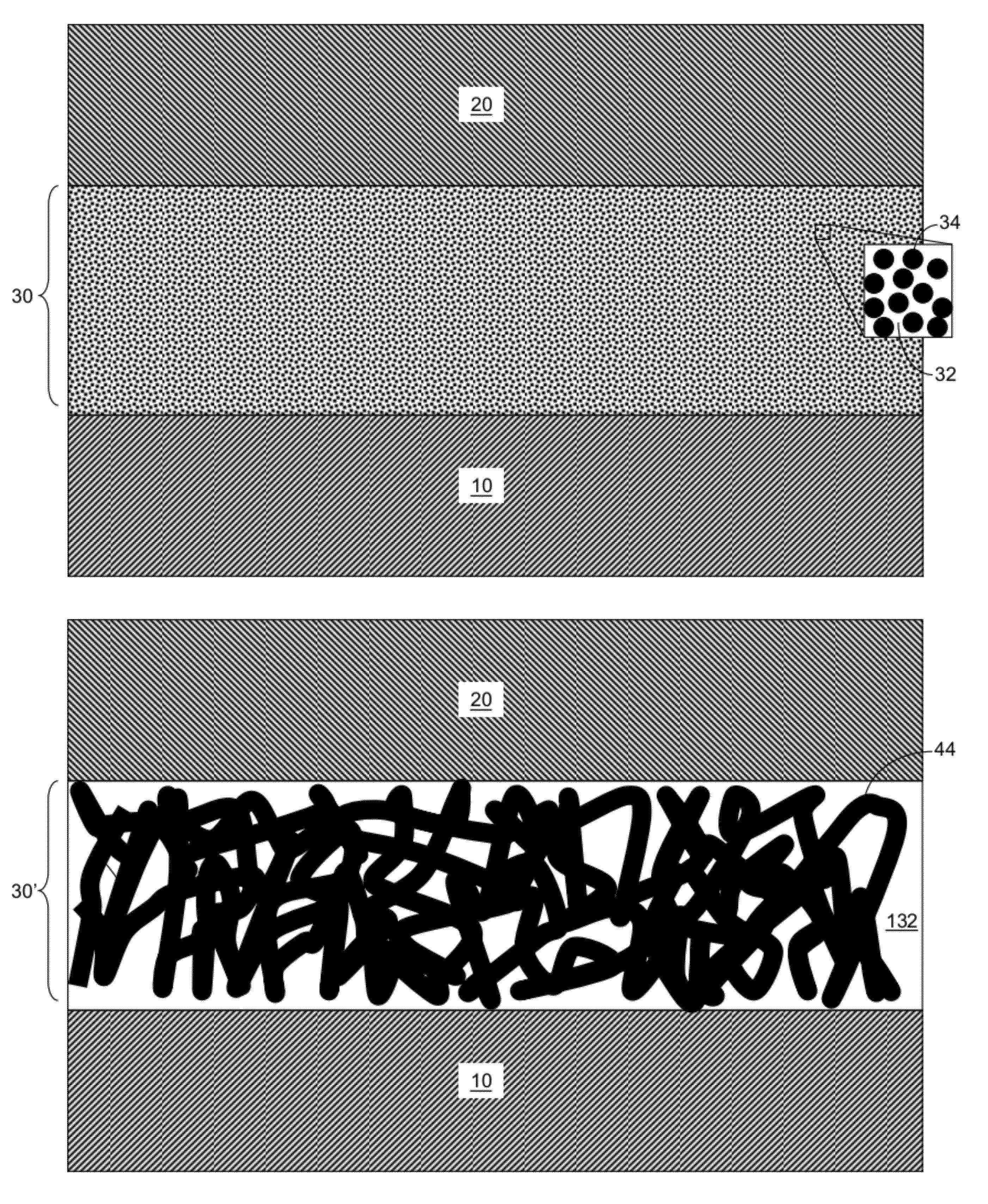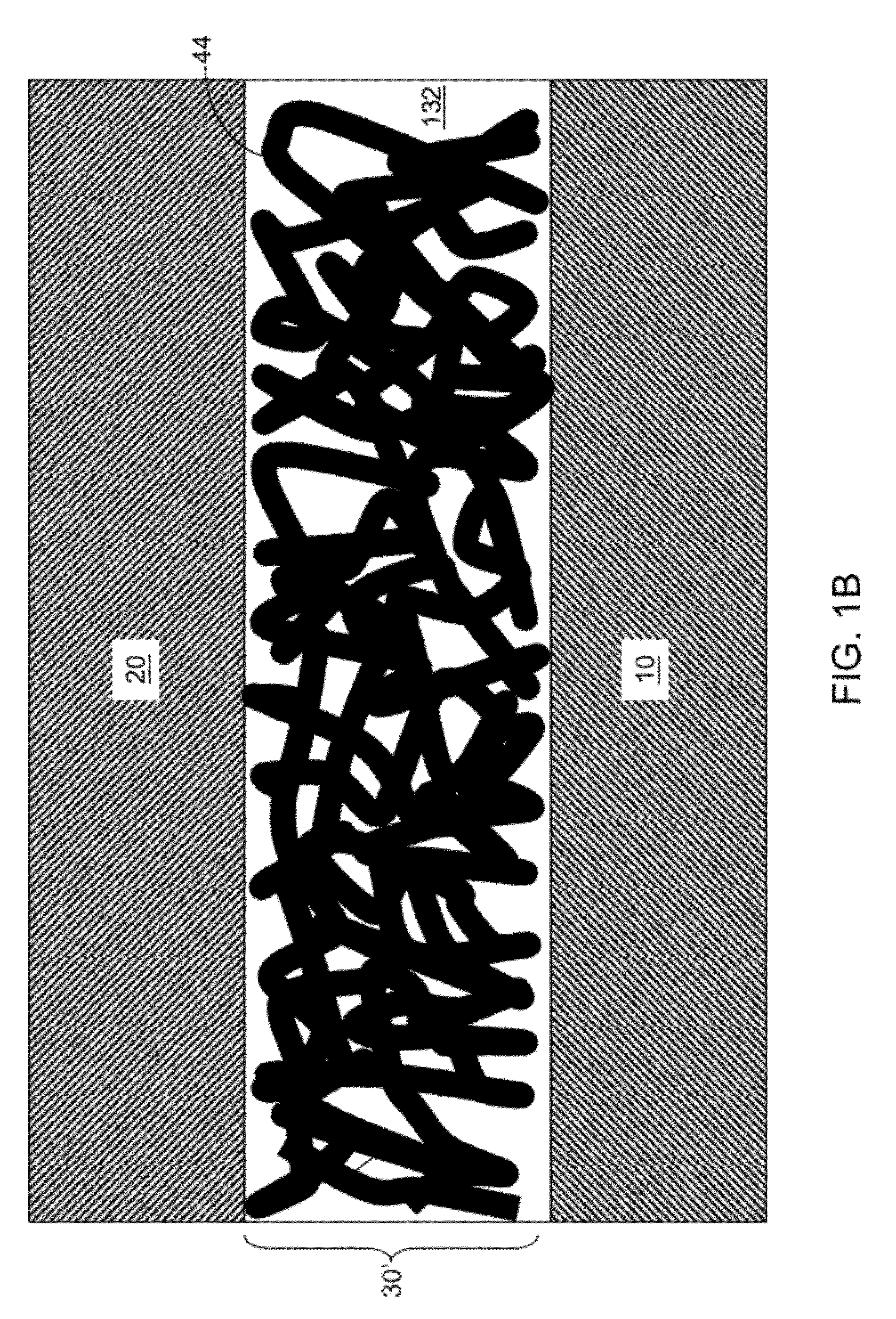High thermal conductance thermal interface materials based on nanostructured metallic network-polymer composites
a composite material and high thermal conductivity technology, applied in the direction of coatings, material nanotechnology, chemistry apparatus and processes, etc., can solve the problems of reduced conductivity of composite structures, undesirable increase in thermal resistance, and increase in bond line thickness (blt) of composite structures, so as to promote wetting and dispersion of nanoparticles, high thermal conductivity, and low filler loading and viscosity
- Summary
- Abstract
- Description
- Claims
- Application Information
AI Technical Summary
Benefits of technology
Problems solved by technology
Method used
Image
Examples
examples
[0080]A high thermal conductivity nanocomposite was obtained at relatively low filler loading by controllably producing the highly connected, metallic network in an epoxy matrix. Pure epoxies have low κ of about 0.18 W / mK.
[0081]Following the steps of FIGS. 5A-5C, a high thermal conductivity network (HTCN) was formed after dispersion and controlled sintering of silver nanoparticles. Thermal conductivity measurements showed a thermal conductivity of about 29 W / mK, for 20 nm silver nanoparticles based composites with a volume fraction of 30%. Even at lower nanoparticle volume fractions (10%), the measured thermal conductivities in the nanocomposites was about 7 W / mK. which surpasses the thermal conductivity reported for epoxy microparticle composites as known in the art.
[0082]Moreover, a fundamental difference between the microparticle and the nanoparticle based composites has been observed. At the same volume fractions, silver-epoxy based composited obtained with 2˜4 μm diameter silve...
PUM
| Property | Measurement | Unit |
|---|---|---|
| volume fraction | aaaaa | aaaaa |
| temperature | aaaaa | aaaaa |
| temperature | aaaaa | aaaaa |
Abstract
Description
Claims
Application Information
 Login to View More
Login to View More - R&D
- Intellectual Property
- Life Sciences
- Materials
- Tech Scout
- Unparalleled Data Quality
- Higher Quality Content
- 60% Fewer Hallucinations
Browse by: Latest US Patents, China's latest patents, Technical Efficacy Thesaurus, Application Domain, Technology Topic, Popular Technical Reports.
© 2025 PatSnap. All rights reserved.Legal|Privacy policy|Modern Slavery Act Transparency Statement|Sitemap|About US| Contact US: help@patsnap.com



